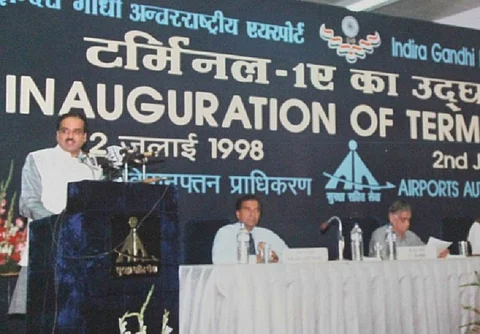

In the late 1980s, Bengaluru, still untouched by the IT boom, had a small airport – the HAL airport, located 10 km away from the centre of the city. The airport was small with an apron that could park only six aircraft.
After the IT boom, a decision was formed by the committee headed by former National Airports Authority of India Chairman, S Ramanathan that Bengaluru would need a larger airport. The panel decided that the structure would come up in Devanahalli.
The Karnataka government formed a proposal which the Union government approved in 1994. In December 1995, a consortium consisting of Tata Group, Raytheon and the Singapore Government signed an MoU to participate in the project.
With immense bureaucratic delays in the Centre, the MoU remained just that and there was no progress towards the construction of a new airport. In June 1998, however, the consortium announced it was pulling out of the project due to delays in government approval. One of the major disputes was that the consortium had demanded that the HAL Airport shut down its operations completely.
Another major issue was the cost of the project was too high and that the consortium was unhappy about the economic viability of the project being affected by the delay.
The issue was also bogged down by the controversies over the land acquisition process and the nature of the proposal as it was unclear whether the model would be to build, own and operate or whether build, own, operate and transfer.
There was a need to meet the growing aspirations of the garden city turned IT capital of India as Bengaluru did not have a decent airport to enhance its global image. However, things took a turn when Ananth Kumar was appointed as the Minister for Civil Aviation in the Atal Bihari Vajpayee cabinet in 1998.
Within 10 months of his appointment, Ananth Kumar upgraded the Bangalore HAL airport. He ensured that a new international terminal, was added. New aero bridges were created and the runways were enhanced. The first international flight from Bengaluru to New York took off during his tenure as the Minister for Civil Aviation. This offered a respite from the growing demand for a new airport.
However, in May 1999, the Airports Authority of India and the Karnataka State Industrial and Infrastructure Development Corporation (KSIIDC) signed a memorandum of understanding regarding the construction of an international airport and the nature of the project.
It was decided that the project would operate on public-private partnership with AAI and KSIIDC having 26% share and private companies having the retaining 74% of the share. Once again the project was struck with delays and finally in January 2001, the State Government created the Bangalore International Airport Limited (BIAL) as and began searching for partners. B
y November 2001, the project had attracted Unique Zurich Airport, Siemens Project Ventures and Larsen and Toubro. Again, the project was struck by bureaucratic delays and it was during Ananth Kumar’s tenure as the BJP state President of Karnataka in 2004 that he managed to persuade the Centre to speed up the project approval.
The concession agreement between the Karnataka government, the Centre and BIAL was finally signed in July 2004. Within four years, the international airport in Bengaluru was operational and today, it is one of the busiest airports in the world.